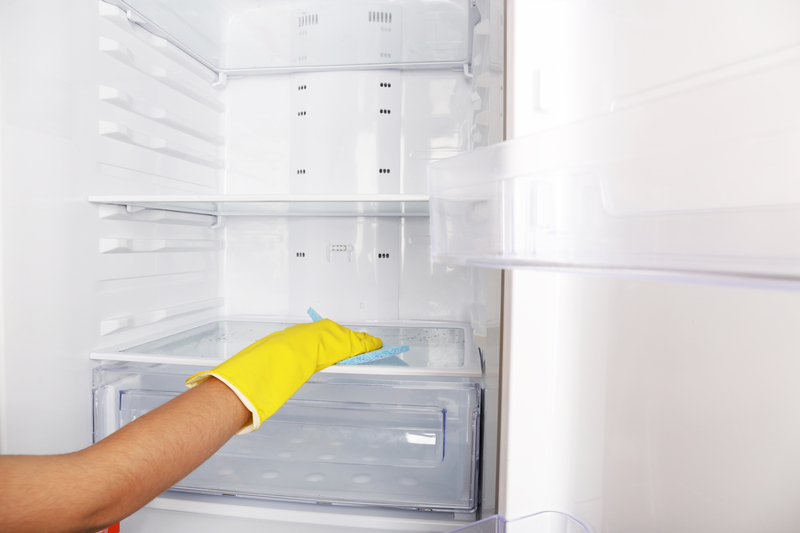Optimize Indoor Conditions by Prioritizing Air Quality
Posted on 19/09/2025
Optimize Indoor Conditions by Prioritizing Air Quality: Why It Matters
The quality of indoor air has become a focal point for both health-conscious homeowners and forward-thinking businesses. Given that most people spend around 90% of their time indoors, optimizing indoor conditions by prioritizing air quality is crucial for comfort, productivity, and well-being. In this comprehensive guide, we explore the significance of indoor air conditions, the common contaminants that threaten it, and actionable strategies to ensure healthier environments in homes and offices alike.

Understanding Indoor Air Quality: The Foundation of Comfortable Living
Indoor air quality (IAQ) refers to the condition of the air inside buildings--offices, schools, homes, and other enclosed environments. Ensuring excellent indoor air is vital, as poor IAQ can lead to a spectrum of health issues, ranging from minor irritations like headaches and eye discomfort to severe respiratory diseases and aggravation of existing allergies or asthma.
The Environmental Protection Agency (EPA) has identified indoor air pollution as one of the top five environmental risks to public health. Optimizing indoor conditions by prioritizing air quality is not just about breathing easier--it's about creating a safe, invigorating, and productive environment.
The Health Impact of Poor Indoor Air Quality
- Short-term symptoms: Fatigue, coughing, throat irritation, dizziness
- Long-term risks: Respiratory diseases, heart conditions, cancer
- Reduced immunity: Chronic exposure can hamper the body's natural defenses
Inadequate air quality can especially affect children, elderly, and those with pre-existing health conditions.
Common Indoor Air Pollutants and Their Sources
"Indoor air pollution" encompasses a range of contaminant sources--some obvious and others often overlooked. To optimize indoor conditions, it's essential to understand what pollutants might be lurking in your environment.
- Volatile Organic Compounds (VOCs): Found in paints, cleaning agents, and scented products. Commonly released by new furniture, carpets, and office equipment.
- Particulate Matter (PM): Fine airborne particles from tobacco smoke, burning candles, cooking, or outdoor infiltration.
- Mold and Biological Agents: Moisture-prone areas like bathrooms and kitchens foster mold, mildew, and bacteria.
- Carbon Monoxide (CO): Resulting from faulty appliances, fireplaces, and running vehicles in garages.
- Radon: A naturally occurring radioactive gas that can seep into homes from the soil below.
- Pet Dander and Dust Mites: Originating from pets, bedding, and upholstered furniture.
Recognizing these polluters is the first step to taking control and optimizing your indoor air quality.
How to Test and Monitor Indoor Air Quality
The journey to optimized indoor air conditions starts with testing and monitoring. Only when you know what's in your air, can you effectively improve it.
Available Tools and Devices
- Air Quality Monitors: Digital devices that track PM, VOCs, humidity, and CO2 levels in real-time.
- Radon Test Kits: Essential if you live in a radon-prone area.
- CO Detectors: Mandatory in many jurisdictions for immediate carbon monoxide threat detection.
It's wise to conduct an indoor air quality assessment at least once a year, or after major renovations or changes in household habits.
Effective Strategies for Optimizing Indoor Air Quality
Once you've assessed your environment, the next step is to take actionable measures to optimize indoor conditions by prioritizing air quality. Below, we break down crucial steps for homes and workplaces.
1. Maximize Ventilation
- Open windows regularly for cross-ventilation.
- Use mechanical ventilation systems such as exhaust fans in kitchens and bathrooms.
- Install energy recovery ventilators (ERVs) and heat recovery ventilators (HRVs) for air exchange without energy loss.
Proper airflow dilutes contaminants and keeps moisture in check.
2. Control Humidity Levels
- Keep humidity between 30-50%. Too much moisture encourages mold; too little exacerbates respiratory troubles.
- Use dehumidifiers in damp areas and humidifiers during dry seasons.
- Fix leaks and maintain plumbing to prevent water damage and mold growth.
Controlling humidity is one of the most effective ways to prioritize indoor air quality.
3. Choose Low-Emission Materials and Products
- Opt for low-VOC paints, adhesives, and finishes.
- Select "green" or certified products for furniture and flooring that emit fewer chemicals.
- Avoid synthetic air fresheners--use natural alternatives such as essential oils as needed.
Reducing the source of pollutants is a major step toward optimized air quality indoors.
4. Keep Interiors Clean and Dust-Free
- Vacuum with HEPA filters weekly to capture fine particles and allergens.
- Dust surfaces with damp cloths to avoid stirring up particulate matter.
- Wash bedding, curtains, and upholstery regularly.
A clean home or office is the foundation of high indoor air quality.
5. Utilize Air Purification Technology
- Install HEPA-filter air purifiers in living rooms, bedrooms, or high-traffic office areas.
- Consider activated carbon filters to remove odors and chemical fumes.
- Look for UV-C air purifiers that neutralize airborne microbes and viruses.
Technology can provide an extra defense against persistent or invisible contaminants.
6. Avoid Indoor Smoking and Open Flames
- Ban indoor smoking. Tobacco smoke is a leading cause of indoor air pollution.
- Limit use of candles, incense, or unvented fireplaces--all of which release particulate matter.
Small lifestyle changes have a big effect on indoor air conditions.
7. Incorporate Indoor Plants Wisely
- Use plants like spider plant, peace lily, or snake plant that can help absorb toxins.
- Monitor for mold in plant soil--overwatering can create new problems.
While some evidence for plants improving indoor air quality is mixed, they can enhance overall comfort and psychological well-being.
Special Considerations: Optimizing Air Quality for Allergies and Asthma
For individuals with allergies or asthma, optimizing indoor air conditions is not just about comfort--it's vital for health. Here's what to prioritize:
- Use HEPA filters in vacuums and HVAC systems.
- Encase bedding in allergen-proof covers.
- Minimize use of carpets and heavy drapes in bedrooms.
- Maintain relative humidity below 50%.
Workplaces should offer reasonable accommodations for employees with respiratory sensitivities, ensuring everyone benefits from high indoor air standards.
Smart Technology for Monitoring and Improving Indoor Air
The drive to optimize indoor air quality has fostered innovation in smart home technologies. New solutions allow you to continuously monitor and adapt indoor conditions for the best air quality.
Trending Devices
- Smart air quality monitors that integrate with smartphones for real-time alerts.
- Wi-Fi enabled air purifiers allow scheduling and remote operation.
- Automated thermostats manage air flow and filtration based on sensor data.
Integrating smart technology makes optimizing indoor air effortless and data-driven, providing peace of mind for families and employees alike.
Optimizing Indoor Air Quality in Specific Environments
Homes, offices, and specialized spaces like schools or fitness centers each have unique needs for optimized indoor air quality. Below are some targeted recommendations.
Home Environments
- Keep entryways clean to prevent dirt and allergens from spreading indoors.
- Install carbon monoxide and radon detectors for lifesaving alerts.
- Regularly maintain HVAC systems and schedule professional cleaning.
Commercial and Office Buildings
- Enforce non-smoking policies on premises.
- Upgrade air filtration during peak allergy seasons or when viral outbreaks are prevalent.
- Introduce flexible workspaces that offer access to fresh air.
Productivity soars in environments with fresh, clean air, underscoring the value of prioritizing indoor air quality at work.

Simple Habits That Make a Big Difference
Sometimes, optimizing indoor air is about small, consistent efforts. Try integrating these daily habits:
- Take off shoes at the door to reduce dust and allergens.
- Avoid over-cluttering spaces, which makes dusting easier and reduces pollutant reservoirs.
- Frequently empty trash bins to prevent biological contamination.
- Use baking soda solutions for cleaning instead of harsh chemicals.
Adopting basic routines can substantially improve indoor air quality over time.
The Bottom Line: Prioritize Indoor Air Quality for Optimal Well-being
Taking the initiative to optimize indoor conditions by prioritizing air quality is a key investment in health, comfort, and productivity. By understanding the sources of indoor air pollution, investing in quality monitoring and purification, and cultivating smart daily habits, you can ensure a sustainable and healthy indoor environment for everyone.
Whether at home or at the office, prioritizing indoor air quality sets a strong foundation for happier, healthier living. Let your journey towards a fresher, cleaner indoor space begin today!




